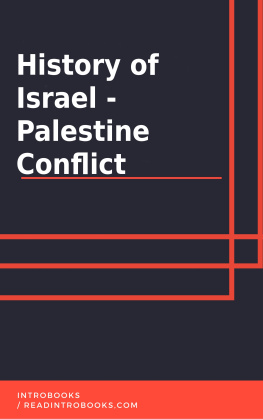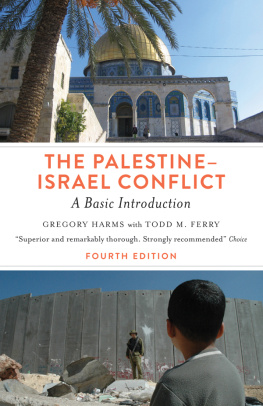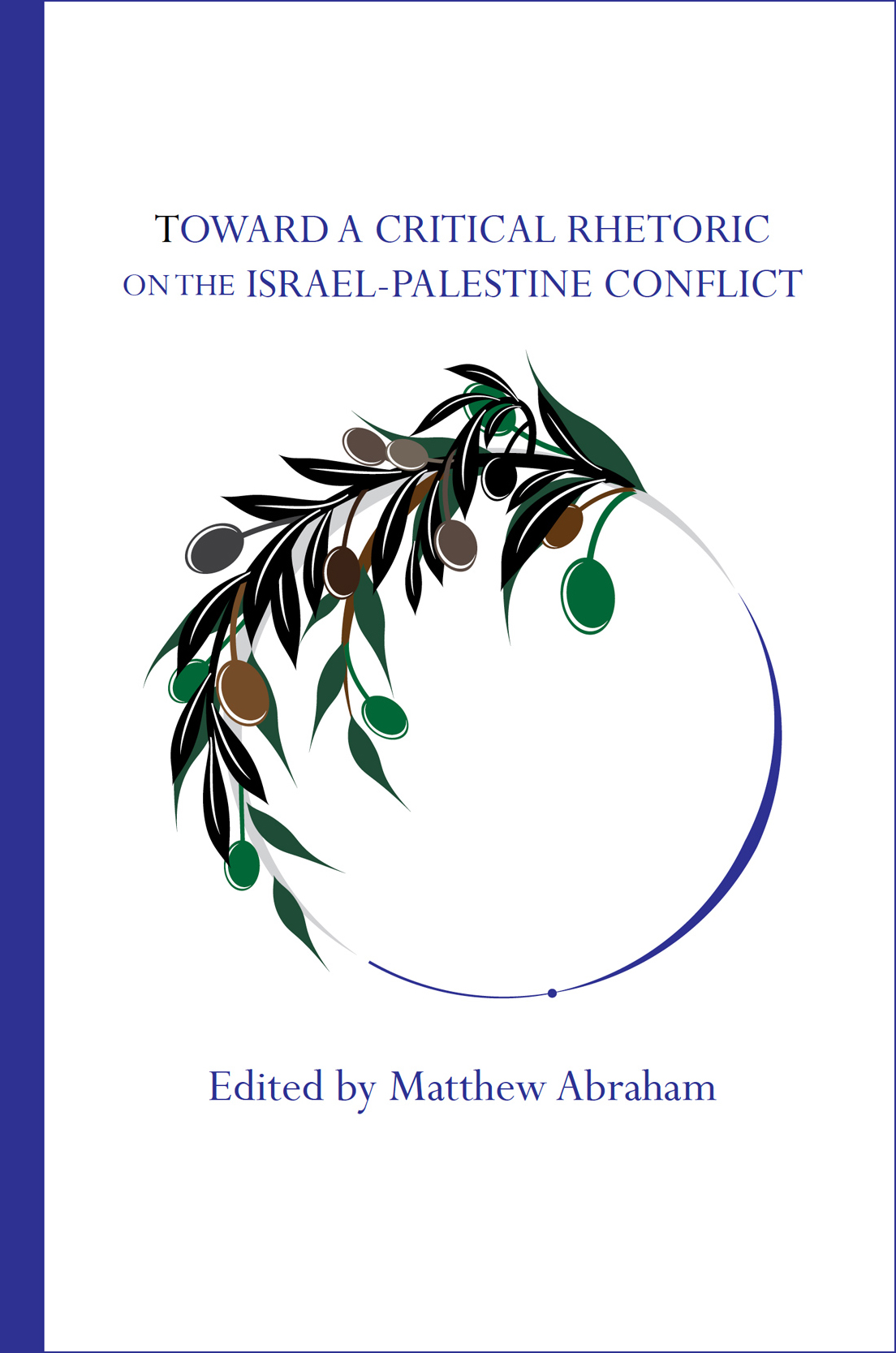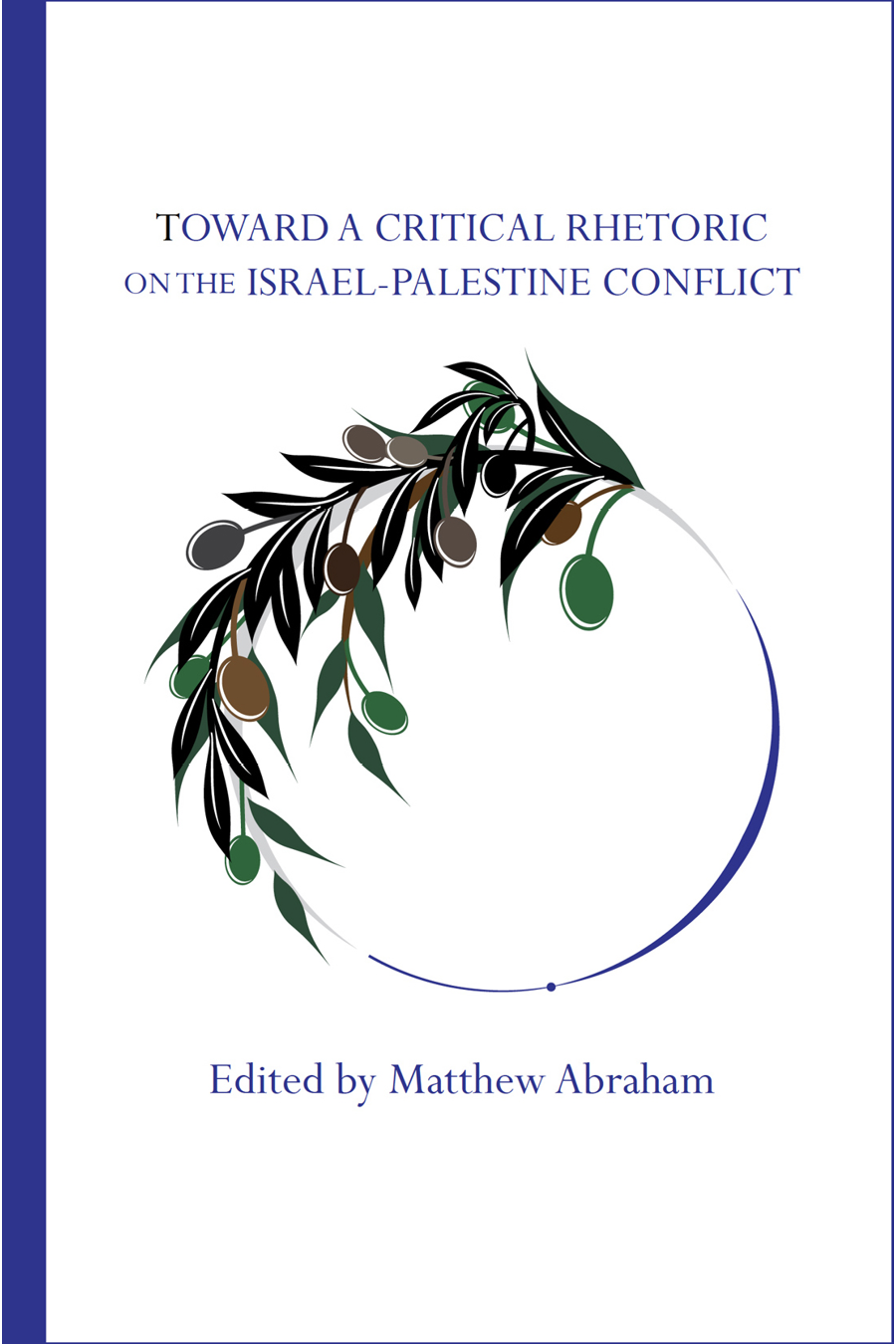Abrahams Toward a Critical Rhetoric on the Israeli-Palestine Conflict addresses traditional rhetorical artifacts (the media accounts that we have come to expect from collections like this since Saids Covering Islam , as well as traditional presidential public address). It also addresses less traditional rhetorical artifacts: from professional discussion lists like WPA-L, the email list for Writing Program Administrators, to the discourse around sister-city designations in Madison, Wisconsin.
The contributions demonstrate the insights generated by rhetorical theories used to unpack texts, such as genre theory and rhetorical listening. Other essays draw on critical theorists such as Levinas and Ricoeur to inform close textual analysis about the most important ethical, political and economic conflict in the world.
David Beard, Associate Professor of Rhetoric, Scientific and Technical Communication, University of Minnesota Duluth
Toward a Critical Rhetoric on the Israel-Palestine Conflict
Edited by Matthew Abraham
Parlor Press
Anderson, South Carolina
www.parlorpress.com
Parlor Press LLC, Anderson, South Carolina, USA
2015 by Parlor Press.
All rights reserved.
Printed in the United States of America
S A N: 2 5 4 - 8 8 7 9
Library of Congress Cataloging-in-Publication Data on File
Toward a critical rhetoric on the Israel-Palestine conflict / edited by Matthew Abraham.
pages cm
Includes bibliographical references and index.
ISBN 978-1-60235-693-1 (pbk. : alk. paper) -- ISBN 978-1-60235-694-8 (hardcover : alk. paper)
1. Arab-Israeli conflict--Public opinion. 2. Public opinion--United States. 3. Rhetoric--Political aspects--United States. 4. Intellectuals--United States--Attitudes. I. Abraham, Matthew, 1972- editor.
DS119.7.T6717 2015
956.94054--dc23
2015020892
Cover design by David Blakesley
Cover Image: Diane Labombarbe. Used by permission.
Copyediting by Jared Jameson
Printed on acid-free paper.
1 2 3 4 5
First Edition
Parlor Press, LLC is an independent publisher of scholarly and trade titles in print and multimedia formats. This book is available in paper, hardcover, and digital formats from Parlor Press on the World Wide Web at http://www.parlorpress.com or through online and brick-and-mortar bookstores. For submission information or to find out about Parlor Press publications, write to Parlor Press, 3015 Brackenberry Drive, Anderson, SC 29621, or e-mail editor@parlorpress.com.
Contents
Acknowledgments
In addition to thanking each of the contributors, I would like to acknowledge the vital help and support of Parlor Press editor, David Blakesley, without whom this collection could not have come into print. David gave this collection a chance to see the light of day, and for that, I am most grateful.
I also must acknowledge the vital help and assistance of Chris Brown, an RCTE graduate student at the University of Arizona, who provided some vital fact-checking of the manuscript during the summer of 2014.
Finally, I wish to thank Jared Jameson, who ably copyedited the manuscript during the production phase.
Editors Introduction
Matthew Abraham
I n recent years, rhetoric and writing scholars have become increasingly interested in the Israel-Palestine conflictand its attendant identity and political issuesas an object of study. This interest in the ways people talk and debate about the conflict, along with all the historical and political baggage inevitably shaping such talk and debate, emerges in the context of a set of concerns about the continued cycles of conflict and violence in the Middle East. Fully believing it is imperative that the relevant issues be openly discussed and explored in the field, the contributors to this collection take it as a given that the rhetorics surrounding the Israel-Palestine conflict should become a more central part of our professional conversationalthough none of us may technically consider ourselves specialists in Middle East history or politics. As specialists in persuasion, however, we do recognize that creating contexts for conversation, exchange, and debate requires continual hard work.
Laying the rhetorical ground to build affective networks conducive to deliberation about a controversial issue such as Israel-Palestine necessitates exploring how positions are drawn and maintained in the midst of discursive indeterminacy and a lack of evidence to support ones perspective. Despite such indeterminacy and a lack of evidence supporting ones expressed position, participants often engage in dogmatic position-taking. Explaining how such expressed certainty emerges and sustains itself across time is the task of rhetoric. Why should scholars, who are continually investigating the contexts within which rhetoric and the conditions of possibility for persuasion are produced, be committed to studying the rhetorical and affective contexts surrounding Middle East politics? There are a number of good reasons for this focus.
First, the intractability of the conflict has been described as being fundamentally about competing and incompatible rhetorics. The rhetoric of Zionism, with its commitment to the protection of the Jewish people in the wake of the Holocaust, clashes with the rhetoric of Palestinian nationalism, which views the Zionist presence in the Holy Land as an alien one. Of course, political Zionisms origins can be traced back to the late nineteenth century, when Theodore Herzl convened the First Zionist Congress in Basel, Switzerland, in the hopes of winning over the heart and minds of the modern European powers to create a Jewish state. The origins of Palestinian nationalism are found in the early twentieth century, as resistance grew within the Palestinian community to Zionist aspirations in Palestine. Robert Rowland and David Frank write, Both Israelis and Palestinians have defined their identity with myth systems, which can be seen as mirror images of each other (14). The fact that these myth systems can be seen as mirror images of each other has profound implications for rhetorical study, especially for those scholars seeking to develop deliberative models through which to reconcile political divisions between Israelis and Palestinians.
Second, as the conflict goes into its sixty-seventh year, and as the turmoil seemingly deepens in the Middle East, civic-minded rhetoricians have felt pressed to extend their professional skills to examine the dynamics of continuing cycles of violence and bloodshed for both Palestinians and Israelis. Discussion of the relevant issues surrounding the conflict is necessary within the U.S. public space. However, far too often position-taking proves a barrier to the prospect of exchanging information and perspectives. This desire to prove the Other wrong, or to be hopelessly misinformed and misguided, creates a rhetorical situation that is untenable for the production of what Krista Ratcliffe has called rhetorical listening, which she defines as a stance of openness that a person may choose to assume in relation to any person, text, or culture; its purpose is to cultivate conscious identifications that promote productive communication, especially but not solely cross-culturally (25).
Third, a rhetoric of inevitability surrounds treatments of the conflict, which frames Israelis, diaspora Jews (Zionist and non-Zionist), and Palestinians as participating in a cosmic struggle, a clash of civilizations, that has no rhyme or reason. Within this rhetoric, there is an unwillingness to interrogate the grounds upon which the conflict is staged, fought, and perpetuated.









